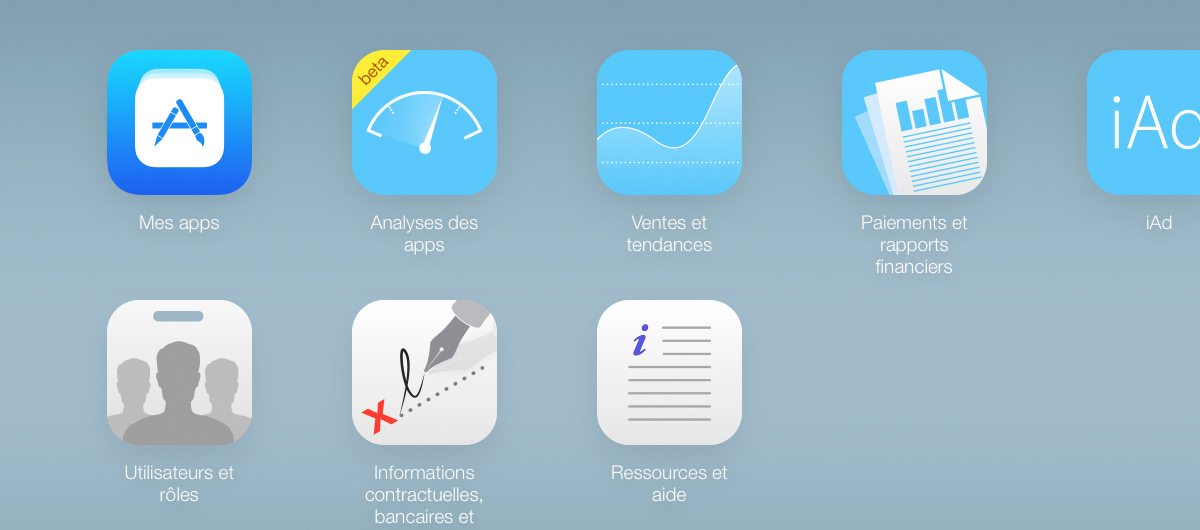

- #Itunes connect app analytics impressions update#
- #Itunes connect app analytics impressions archive#
Content blocking extensions won’t see the URLs of pages or resources being blocked:Ī major benefit of the declarative content blocking extension model is that the extension does not see the URLs of pages and resources the user browsed to or had a page request. Unsurprisingly, Apple built these new extensions differently than most content blockers for desktop browsers. We would love to hear your feedback about what works well, what needs improvement, and what is missing. There is a whole universe of features that can take advantage of the content blocker API, around privacy or better user experience. We wanted to enable better privacy filters, and that is what has been driving the feature set that exists today. We have been building these features with a focus on providing better control over privacy. As for Apple’s motivation, they never mention “ads” in the post, but the focus on disabling trackers and making webpages faster by removing external scripts is fairly clear:

We are working on new tools to enable content blocking at a fraction of the cost. Sometimes, they can allocate tremendous amounts of memory, which goes against our efforts to reduce WebKit’s memory footprint. Certain kinds of extensions also reduce the runtime performance of webpages. The current model uses a lot of energy, reducing battery life, and increases page load time by adding latency for each resource. The reason we are unhappy about the JavaScript-based content blocking extensions is they have significant performance drawbacks. First off, Apple engineers were unhappy with the current state of content blockers: The WebKit blog answers my questions with an in-depth post on content blocking extensions. The general assumption is that Apple wants to enable users to activate ad blockers on the iPhone and iPad, but I wanted to hear Apple’s public stance and details on the implementation. I’ve been curious to know more about the reasoning behind content blocking extensions coming to iOS 9 and OS X El Capitan. That’s an exercise of restraint and good design that can’t be appreciated in other apps. The most impressive aspect of Drafts is how Greg Pierce manages to keep the app simple and powerful at the same time with features that are there but not in the way. Some actions (such as ones that leave Drafts) are not supported for multiple selections and will be grayed out in the list.

When selecting this operation, the action list will be shown to select the action to run. The “Run Action” operation lets you quickly select multiple drafts and run an action on them.
#Itunes connect app analytics impressions archive#
“Select All” is particularly useful to quickly archive all drafts in the inbox, for example. When using the “Select” and “Operations” options below the drafts list, there is now a “Select All” option to quickly select all drafts in the current tab, and a “Run Action” operation to apply an action to multiple drafts. You can also run an action on multiple notes at once now: To use these options in the share sheet, tap the “Append” or “Prepend” buttons at the bottom of the window and select the draft to add the text to. The Drafts Share extension (used from the Share sheet in other apps) now supports appending and prepending to inbox drafts as well as capture of new drafts. This is useful for me when I want to assemble lists of links I can use for MacStories or Relay. The Drafts extension can now offer to append/prepend whatever it receives (some text, a URL, etc.) to existing notes – useful to keep a running list of items without ending with multiple notes or having to merge them manually every time.
#Itunes connect app analytics impressions update#
A great update to Drafts was released earlier this week, and it’s got some interesting changes for users who manage a lot of notes or save bits of text in the same notes on a regular basis.


 0 kommentar(er)
0 kommentar(er)
